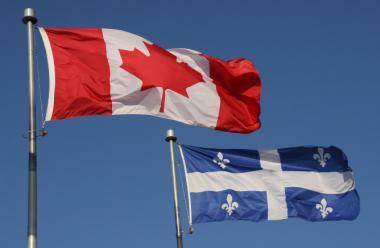The people of Quebec have been swamped by Americanisms in advertising – and they are not happy
Over in Canada the people of Quebec are commemorating the fortieth anniversary of Bill 101. This is the law introduced by Camille Laurin, a former prominent politician in the Canadian province, who made French the official language of government and business communication.
Despite the regulation, the people of Quebec have been swamped by Americanisms in marketing and advertising. They are being targeted with words and phrases that brands are using elsewhere in North America – and they are not happy.
In fact, using the wrong language or losing the meaning through poor translation, punctuation or tone of voice can be a costly mistake for marketers around the world. Yet we see it time and again with global brands.
LINGUISTIC INTERFERENCE
Picture the scene. One territory, perhaps the UK, wins a contract and then asks a favour of a local office (China) to translate marketing material into the local language.
This might sound straightforward, but the problem is the copy and the messaging will have been written with an English or US mind-set and consumer in mind. The target text, the intended translation, can’t just be a carbon copy of the original source text. For example, as an Austrian, I speak fluent German, but because I’ve been in the UK for so long, I’d likely be strongly impacted by the source text.
The result is linguistic interference. This could include grammatical and semantic interference, as well as pragmatic interference. This is where the culture and context of where the ad, marketing message or content will appear has not been taken into account. In Quebec, marketers who have tried to do the right thing have even been criticised for being ‘too French’ when targeting consumers.
The target audience notices such a faux pas immediately, the impact of the words will be lost and the brand’s image damaged. Depending on the region, consumers could be seriously offended, while website traffic, store visits and ultimately sales will be lower.
ONLINE MARKETERS ARE ADAPTING
The challenge for marketers is to ensure their messaging is adapted linguistically for the needs of the local consumer and culture while remaining within their own brand guidelines. It’s not easy. Offline marketers have struggled with this particular conundrum for years and now online marketers are adapting.
Smartphone penetration, estimated to reach 6.1 billion by 2020, according to Ericsson, will boost social mobility around the world and allow brands access to millions of new consumers in regions where they might not have run marketing campaigns before.
The copy and content on local websites must be grammatically correct, while on social media and messaging apps local people might be more engaged if a brand is using local dialect terms and phrases they are familiar with.
A phrase in English might require fewer words in another language so which words do you choose? Search terms are another important consideration. You might use an Americanism like ‘pants’ but if people are searching under the English word ‘trousers’ for the same garment your conversion rate will take a hit.
In an important market like China there are characters to use, while luckily most brands can get away with using standard Chinese across this vast country. However, if you use the terms, sentence structure and character set of Mainland China in Hong Kong you may cause considerable discontent amongst the Cantonese audience.
TRICKY MIDDLE EAST
The Middle East is another tricky area for brands when it comes to managing online campaigns.
Arabic is the native language of more than 200 million people but consumers throughout the Arab world have their own dialects. Local varieties of Arabic are spoken across North Africa and the Middle East while Modern Standard Arabic is used for any formal purpose to target all of the Arabic speaking world, such as via television news and written in newspapers.
Shoppers in Saudi Arabia will use different words and sentence structure than those in Egypt or Lebanon in their daily conversations. If you talk to consumers in that region in an informal environment, such as in social community management, with the wrong spoken variant –the problem will not necessarily be just that you annoy them but instead they may simply not understand your message.
Brands must be aware of these differences and invest in combining native linguistic skills with strong knowledge of online marketing – what we call Performance Linguistics. A failure to do this will leave consumers annoyed or bewildered and unlikely to spend their money.
This was first seen on M&M Global's site here
Newsletter
Enjoy this? Get more.
Our monthly newsletter, The Edit, curates the very best of our latest content including articles, podcasts, video.
Become a member
Not a member yet?
Now it's time for you and your team to get involved. Get access to world-class events, exclusive publications, professional development, partner discounts and the chance to grow your network.

